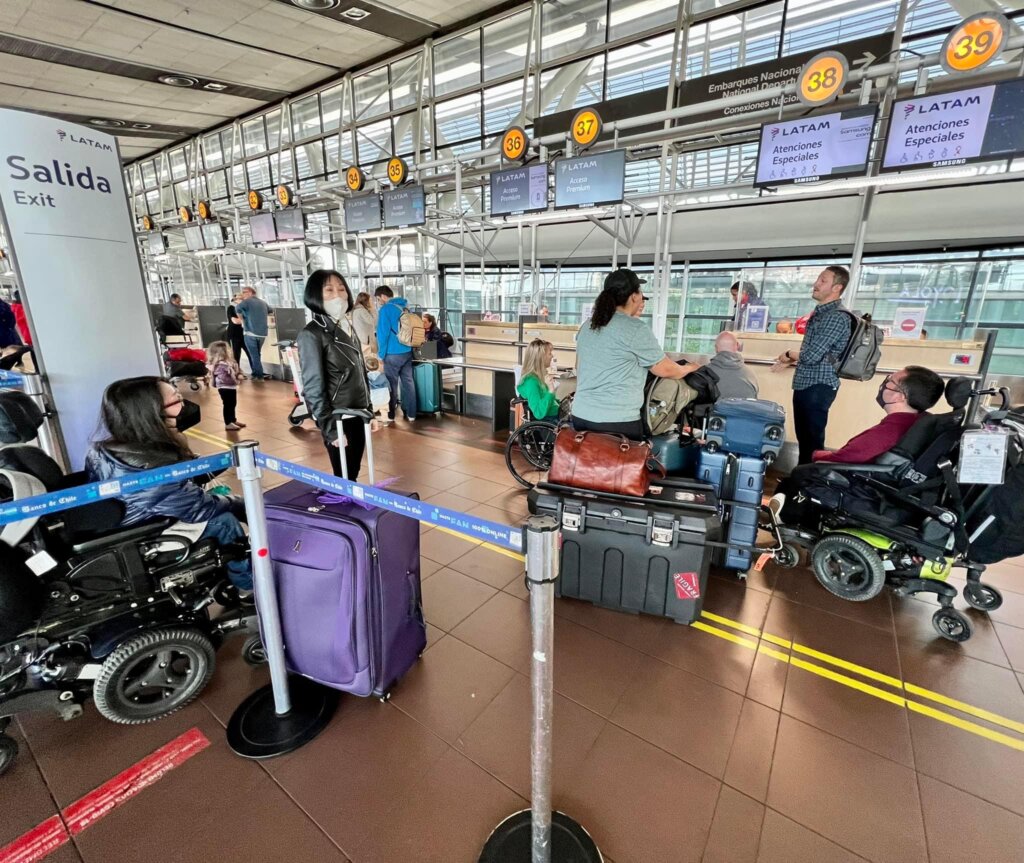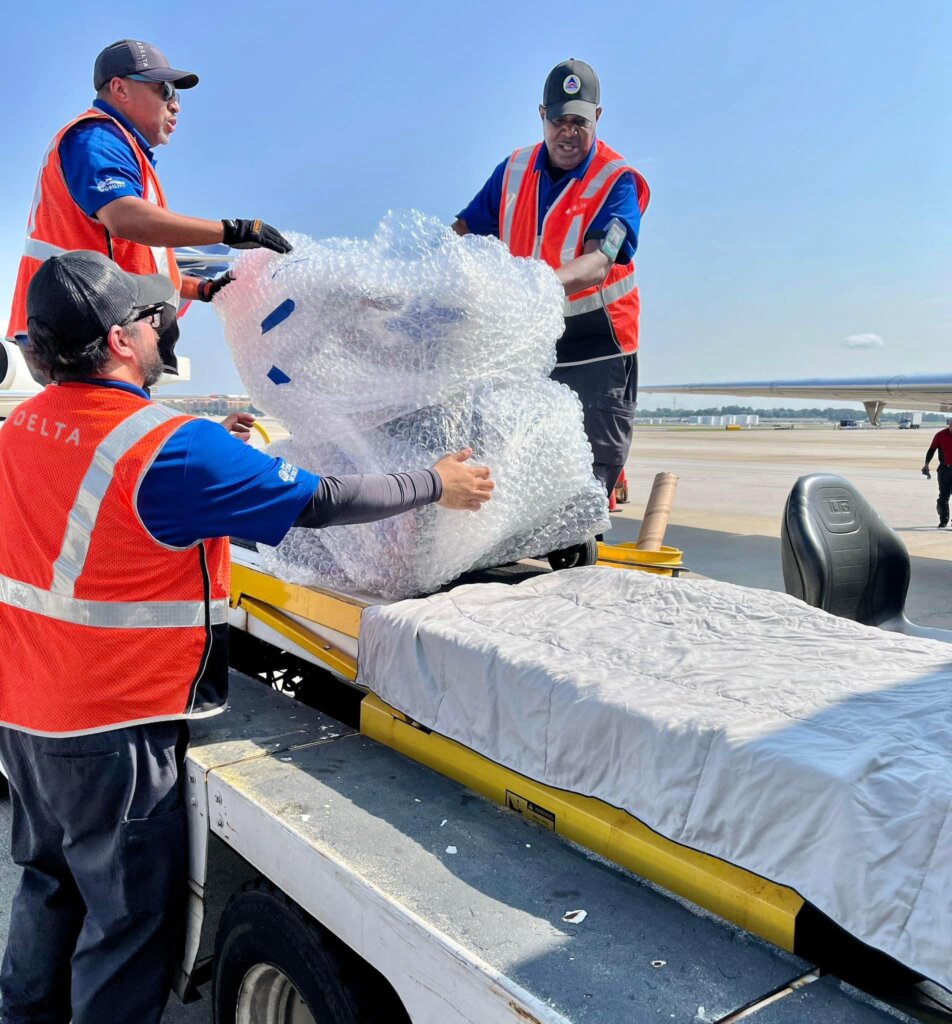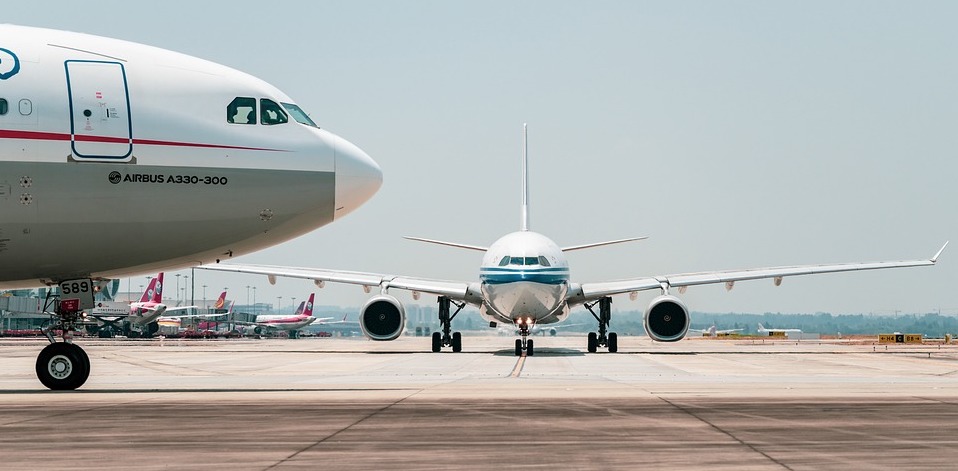If you or a loved one uses a wheelchair, traveling by air may seem complicated. And I’ll admit, it’s definitely not the easiest thing in the world to do. However, with the right information, flying with a wheelchair can be a smooth and relatively comfortable experience. In this guide, I’ll answer common questions such as “Can wheelchairs go on airplanes?”, “Do airlines accommodate wheelchairs?”, “Where do wheelchairs go on planes?”, “Where do wheelchair users sit on planes?”, and “Can you fly in a wheelchair”.
By the time you finish reading this article, hopefully all of your air travel questions will be answered. Also, it’s important to note that the below information is for flights departing from or arriving in the United States. Now, let’s dive in and explore everything you need to know about taking a wheelchair on a plane!

Can Wheelchairs Go on Airplanes?
Yes, wheelchairs can go on airplanes (either in the cabin if it’s a manual wheelchair or in the cargo hold if it’s a motorized wheelchair), BUT wheelchair users cannot stay in their wheelchair during flight. Airlines are required by law to accommodate passengers with disabilities, including those who use wheelchairs. However, there are certain guidelines and procedures that must be followed to ensure the safety and comfort of wheelchair users during air travel.
Do Airlines Accommodate Wheelchairs?
Airlines are mandated by the Air Carrier Access Act to accommodate passengers who use wheelchairs. This includes providing assistance at the airport, as well as ensuring that wheelchair users are able to board and deplane safely. Upon booking a flight, it’s important to inform the airline about the need for wheelchair assistance. This allows the airline to make the necessary arrangements to facilitate a smooth travel experience for wheelchair users.
Where Do Wheelchairs Go on Planes?
When it comes to flying with a wheelchair, it’s essential to understand where wheelchairs are stored on planes. In most cases, wheelchairs are stored in a designated area within the aircraft. Depending on the type of wheelchair and the aircraft, this storage area may be in the cargo hold or another designated compartment. It’s crucial to communicate with the airline and inform them about the specific type of wheelchair being transported to ensure proper storage and handling. I use a motorized wheelchair that weighs about 400 lbs, so it is always stored in the cargo hold under the plane. However, if you use a manual wheelchair, it can be kept in the overhead bin (where carry-on bags go) or it can be strapped into a seat on the airplane. Many airline workers aren’t aware of these regulations, so it’s important to thoroughly study your rights under the Air Carrier Access Act before you fly.

Where Do Wheelchair Users Sit on Planes?
Wheelchair users are seated based on their individual needs and the type of aircraft. Some wheelchair users may prefer to remain in their personal wheelchair until boarding, while others may transfer to an airport wheelchair when they check-in for their flight. Airlines are responsible for providing seating accommodation that is suitable for the passenger’s needs. It’s important to communicate any specific seating requirements to the airline during the booking process to ensure a comfortable and safe flight experience. I always request the “bulkhead seating” on the plane, as it allows me more space to transfer into my seat.

Tips for Traveling with a Wheelchair on a Plane
Air travel for wheelchair users is intimidating. Trust me, I fully understand that it can seem daunting, but as long as you do everything within your power to make it a good experience, you could have an enjoyable flight. Here are five tips if you will be flying as a wheelchair user:
1. Plan Ahead: When booking a flight, inform the airline about the need for wheelchair assistance and any specific requirements.
2. Know Your Rights: Familiarize yourself with the rights and regulations that protect the rights of passengers with disabilities, including those who use wheelchairs.
3. Communicate Your Needs: Clearly communicate your specific needs and preferences to the airline to ensure that appropriate accommodations are provided.
4. Arrive Early: Arrive at the airport well in advance to allow ample time for check-in, security screening, and boarding, especially when traveling with a wheelchair.
5. Prepare Your Wheelchair: Ensure that your wheelchair is properly prepared for air travel, including securing loose parts and removing any non-essential accessories.

In conclusion, traveling with a wheelchair on a plane is feasible and achievable with the right information and preparation. Airlines are required to accommodate passengers who use wheelchairs, and there are specific guidelines in place to ensure the safety and comfort of wheelchair users during air travel. By understanding where wheelchairs are stored on planes, how wheelchair users are seated, and the available accommodations for flying in a wheelchair, passengers can navigate air travel with confidence and peace of mind.
For more information and tips for flying as a wheelchair user, get my book “Air Travel for Wheelchair Users” by clicking here.
.
.







